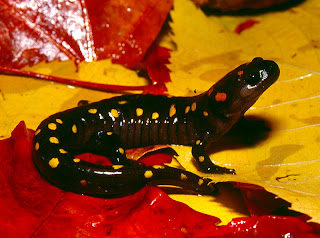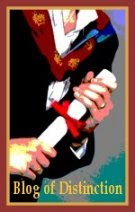
High: 64° FIt’s been a busy week for animals in Central Maine. After a rough few days, our salamanders seem to be faring much better, and casualties are becoming more of a rarity each evening. I’m embarrassed to admit that the noble intentions Ari and I had of serving as salamander crossing guards never quite came to fruition: each time it occurred to either one of us, we’d both realize we were too tired and too comfortable in our respective beds to do much about it. Sorry, guys. Maybe next year?
Low: 36° F
Conditions: Brilliantly sunny and mild.
That’s her choice. Personally, I could spend the whole day immersed in interesting frog facts. Like this one: during winter and spring, spring peepers actually freeze solid: like little frogcicles, as it were. Luckily, the high level of glucose in their systems works as a kind of antifreeze, preventing cell walls from bursting from the expanding ice. I find that amazing.
Now fully thawed, our neighborhood peepers compete with one another to attract a remaining female. Once they settle on their seasonal partner, an aggressive mating process will begin. Frogs sex is known to scientists as amplexus, which translates from Latin as “to braid.” It is clearly not for the faint of heart.
Try as we might, Ari and I have not been able to see a single peeper: they’re just too good at camouflage. But we are starting to find these little egg sacks in the pools and puddles out in the forest:


That tiny black dot is a nucleus—kind of like a miniature egg yolk, though probably a lot less tasty for both humans and caninaturalists alike.
I'm guessing here, of course. To be honest, neither of us are can confirm for sure: Ari doesn’t seem interested enough in the eggs to try, and I just can’t get up the nerve. I guess, all things considered, I rather see that crazy spring chorus grow.

 These magical little oases appear as the snow melts and then collects in terrestrial depressions. They’ll hang around for a few months and then, poof! they magically disappear sometime around the 4th of July.
These magical little oases appear as the snow melts and then collects in terrestrial depressions. They’ll hang around for a few months and then, poof! they magically disappear sometime around the 4th of July.








 Since that first season, they’ve returned each year around this time. They spend a few weeks sprucing up the old nest and reclaiming hunting perches, then they get down to the business of egg laying and chick rearing. We humans are so enchanted with their little domestic life that we don’t even mind the white streaks that quickly dot our vehicles, or the fact that we have to use the basement door to enter our house after the kids are born.
Since that first season, they’ve returned each year around this time. They spend a few weeks sprucing up the old nest and reclaiming hunting perches, then they get down to the business of egg laying and chick rearing. We humans are so enchanted with their little domestic life that we don’t even mind the white streaks that quickly dot our vehicles, or the fact that we have to use the basement door to enter our house after the kids are born.




























